A 1921 Morgan silver dollar’s value depends on mint mark, condition, and errors. Standard circulated coins typically sell for $40-$70, while uncirculated examples (MS60-MS63) range from $60-$150. High-grade coins (MS65+) are significantly more valuable: Philadelphia ($200-$500+), Denver ($550+), and San Francisco ($875+) mint marks command premium prices.
Valuable errors include off-center strikes, the “Thornhead” die gouge on 1921-S coins, missing “S” in “TRUST” ($1,500+), lamination defects, curved clips ($600+), and doubled die reverse ($679+). Mint marks appear below the wreath on the reverse: no mark (Philadelphia), “D” (Denver), or “S” (San Francisco). Professional certification from NGC or PCGS adds credibility and value, especially for errors and high-grade specimens.
The 1921 Morgan silver dollar marks the end of an era—the final year of America’s beloved silver dollar before production ceased until 1921. With over 86 million coins struck across three mints, these pieces remain widely available today. While most circulated examples trade close to their silver melt value of around $20-$25, certain mint marks, pristine grades, and rare minting errors can push values into the hundreds or even thousands of dollars.
Understanding the Three 1921 Mint Varieties
Each of the three mints that produced 1921 Morgan dollars left its distinctive mark, and these variations directly impact collector value today.
Philadelphia Mint (No Mint Mark)
The Philadelphia facility produced the highest quantity in 1921, striking 44,690,000 pieces with no mint mark designation. This massive production run makes them the most common variety, but exceptional specimens still command premium prices.
Grade | Estimated Value
—|—
Good (G-4) to Very Good (VG-8) | $51–$52
Fine (F-12) to Extremely Fine (EF-40) | $52–$58
About Uncirculated (AU-50 to AU-58) | $58–$60
Mint State (MS-60 to MS-63) | $60–$150
MS-64 | $150–$200
MS-65 | $200–$350
MS-66 and higher | $500–$17,500
A particularly noteworthy example sold through Heritage Auctions in 2019: an MS-67+ specimen realized $17,500, demonstrating the exponential value increase at the highest preservation levels.
Denver Mint (“D” Mint Mark)
Denver struck 20,345,000 pieces in 1921, making this the second most common variety. The “D” mint mark appears on the reverse beneath the wreath ribbon.
Grade | Estimated Value
—|—
Good (G-4) to Very Good (VG-8) | $51–$54
Fine (F-12) to Extremely Fine (EF-40) | $54–$60
About Uncirculated (AU-50 to AU-58) | $60–$65
Mint State (MS-60 to MS-63) | $60–$150
MS-64 | $150–$275
MS-65 | $550–$700
MS-66 | $1,200–$2,500
The Denver mint coins typically show slightly weaker strikes than their Philadelphia counterparts, making fully struck examples with sharp eagle breast feathers particularly desirable to advanced collectors.
San Francisco Mint (“S” Mint Mark)
San Francisco produced 21,695,000 examples, creating the middle ground in terms of mintage. The “S” designation sits below the wreath on the coin’s reverse.
Grade | Estimated Value
—|—
Good (G-4) to Very Good (VG-8) | $51–$60
Fine (F-12) to Extremely Fine (EF-40) | $60–$70
About Uncirculated (AU-50 to AU-58) | $70–$80
Mint State (MS-60 to MS-63) | $60–$150
MS-64 | $225–$400
MS-65 | $875–$1,200
MS-66 and higher | $2,500–$8,000
San Francisco strikes generally exhibit superior quality compared to the other two mints, with better luster and more detailed features. This quality advantage becomes apparent in higher grades, where “S” mint coins command notable premiums.
Rare Minting Errors That Increase Value Dramatically
Manufacturing imperfections from 1921 create some of the most sought-after varieties among error coin collectors. These mistakes transform common silver dollars into specialty pieces worth significantly more than standard examples.
Doubled Die Reverse (DDR) Varieties
Die doubling occurs when the die shifts slightly between hubbing impressions, creating a doubled image on the finished coin. Several distinct DDR varieties exist for 1921 Morgan dollars, with the most dramatic examples showing clear doubling in “UNITED STATES OF AMERICA” or “E PLURIBUS UNUM.”
A particularly strong 1921 DDR variety sold at auction in 2022 for $679 in MS-63 condition. Lesser doubled die examples in circulated grades typically bring $150-$300 depending on the doubling’s prominence and the coin’s overall condition.
The “Thornhead” Die Gouge (1921-S Exclusive)
This fascinating variety appears only on certain 1921-S dollars, where a damaged die created what resembles a thorn or spike protruding from Liberty’s head on the obverse. The gouge resulted from debris or a broken piece of metal that damaged the die surface during production.
PCGS-certified Thornhead varieties in AU-50 grade sell for $275-$350, while MS-63 examples reach $500-$650. The dramatic visual nature of this error makes it highly collectible even among casual enthusiasts.
Missing “S” in “TRUST” Error
Among the rarest 1921 Morgan errors, this variety shows a completely absent letter “S” in the motto “IN GOD WE TRUST” on the obverse. Only a handful of certified examples exist across all three mint marks.
A 1921 no mint mark example graded MS-62 by NGC sold for $1,850 in 2021. Even circulated examples in Fine condition command $400-$600 when authenticated by major grading services.
Off-Center Strikes
Off-center errors happen when the planchet (blank metal disc) feeds incorrectly into the press, resulting in a coin struck away from its intended position. The value increases proportionally with the degree of misalignment—a 5% off-center strike adds modest value, while a 50% off-center example becomes a significant prize.
A 1921-D Morgan dollar struck 35% off-center sold for $825 in 2023 at Heritage Auctions in AU-55 condition. Dramatic off-center strikes (40-60%) with full dates visible can exceed $1,500 regardless of the base coin’s grade.
Curved Clip Planchets
Curved clips occur when punching machines cut planchets from silver strips that overlap previous punching operations, creating a distinctive curved indentation along the coin’s edge. These differ from straight clips, which result from planchets cut at sheet edges.
Certified 1921 Morgan dollars with prominent curved clips (15-20% of the edge missing) typically sell for $300-$650 depending on the base coin’s condition and the clip’s size.
Lamination Errors and Planchet Peeling
Metal impurities or improper alloy mixing can cause the coin’s surface layers to separate or peel away, creating distinctive lamination errors. These defects appear as raised or separated metal layers on the coin’s surface.
A 1921-S Morgan dollar with a dramatic reverse lamination graded AU-50 by PCGS sold for $185 in 2022. More extensive laminations covering larger surface areas can bring $250-$400 in similar grades.
Locating and Identifying Mint Marks Correctly
Finding the mint mark requires examining the reverse (tails side) of your 1921 Morgan dollar. Look directly beneath the wreath at the bottom center of the coin, just above the ribbon that ties the wreath together.
The mint mark appears as a small letter approximately 1-2 millimeters in height. Philadelphia Mint coins bear no mint mark in this location—the absence of any letter indicates Philadelphia origin. Denver coins show a distinct “D,” while San Francisco pieces display an “S.”
Wear and circulation can make mint marks difficult to read on heavily worn examples. Using a magnifying glass or jeweler’s loupe with 5x to 10x magnification helps confirm the presence and identity of faint mint marks. Proper lighting—preferably a bright LED lamp angled to create shadows—reveals subtle details more effectively.
Counterfeit mint marks occasionally appear on the market, where unscrupulous sellers add fake “S” mint marks to more common Philadelphia or Denver coins. Authentic mint marks show the same wear pattern as surrounding design elements, while added marks often appear sharper or differently worn than the coin’s overall condition suggests.
The Silver Content Foundation of Value
Every 1921 Morgan silver dollar contains 0.7734 troy ounces of 90% silver, with the remaining 10% consisting of copper for durability. This composition remained consistent throughout the Morgan dollar series from 1878 to 1921.
With silver trading at approximately $24 per troy ounce as of early 2024, the melt value sits around $18.50-$19.00 per coin. This figure establishes the absolute minimum worth of any 1921 Morgan dollar—regardless of condition, mint mark, or damage, the coin will never fall below its precious metal content value.
Market dealers typically pay slightly above melt value even for heavily worn or damaged specimens, usually offering $20-$25 per coin to account for future silver price fluctuations and resale margins. This floor value makes 1921 Morgan dollars attractive as both collectibles and silver investments.
The substantial silver content also means coin values fluctuate with precious metal markets. When silver prices spiked to $48 per ounce in 2011, even common circulated 1921 Morgan dollars traded for $35-$40 based purely on metal value.
Professional Grading’s Impact on Marketability
Third-party certification from Professional Coin Grading Service (PCGS) or Numismatic Guaranty Company (NGC) significantly affects a 1921 Morgan dollar’s salability and realized price, particularly for high-grade examples and error varieties.
Grading fees typically range from $20-$50 per coin depending on service level and turnaround time. This investment makes sense for coins likely to grade MS-64 or higher, or for any error variety regardless of technical grade.
A raw (uncertified) 1921-S Morgan dollar claimed to be MS-65 might sell for $400-$500 due to buyer uncertainty. The identical coin in an NGC MS-65 holder commands the full $875-$1,200 market value because the professional grading removes authentication and condition concerns.
Statistical research from Heritage Auctions indicates certified Morgan dollars sell for 25-40% more than comparable raw examples when condition grades are comparable. The gap widens dramatically for claimed high grades—an uncertified “MS-66” often sells for less than a certified MS-64 because buyers discount unverified condition claims.
For error varieties, certification becomes even more critical. The difference between a genuine doubled die and mechanical doubling (a worthless form of doubling) requires expert analysis. A certified DDR variety sells immediately at premium prices, while raw examples face significant buyer skepticism.
Building a Strategic Collection Around 1921 Issues
Collectors approaching 1921 Morgan dollars have several viable strategies depending on budget, goals, and collecting philosophy.
The Complete Mint Mark Set Approach
Assembling one example from each mint (no mint mark, “D,” and “S”) in matched grades creates a satisfying basic set. This approach works well for budget-conscious collectors—three coins in Fine to Very Fine condition cost $150-$200 total, while MS-63 examples of all three mints run approximately $400-$450.
Advanced collectors often pursue matched MS-65 examples across all three mints, an achievement requiring $1,600-$2,200 and considerable patience finding quality specimens.
The Error Variety Specialist Route
Some collectors focus exclusively on acquiring different 1921 error types rather than completing mint mark sets. This approach offers more diversity and often greater appreciation potential, as error coins represent one-of-a-kind or extremely limited varieties.
A representative error collection including an off-center strike, a lamination error, a curved clip, and a minor doubled die variety might cost $800-$1,200 but provides considerably more visual interest and conversation value than four standard high-grade examples.
The Investment-Grade Strategy
Investors typically focus on acquiring the finest available examples—MS-66 and higher grades where populations remain limited and demand from registry set collectors drives prices steadily upward.
MS-66+ examples of 1921-S Morgan dollars have appreciated approximately 45% over the past five years according to PCGS Price Guide data, outpacing both inflation and the broader rare coin market. This performance makes top-grade specimens attractive for those viewing coins as alternative investments rather than pure collectibles.
Making Informed Buying and Selling Decisions
Understanding current market conditions helps both buyers and sellers achieve fair transactions in today’s 1921 Morgan dollar marketplace.
Buying Considerations
Online auction platforms like Heritage Auctions and GreatCollections provide transparent pricing data through completed auction results. Review 3-6 months of recent sales for specific grade and variety combinations before making purchase decisions.
Local coin shops typically charge 10-20% premiums over wholesale levels but offer immediate acquisition and the ability to examine coins in person before buying. This advantage matters significantly when purchasing raw (uncertified) examples where condition assessment requires hands-on inspection.
Selling Strategies
Private sales through online marketplaces like eBay reach broad audiences but involve listing fees, payment processing charges, and shipping logistics. Total costs typically consume 12-15% of the sale price for individual coins.
Consigning to major auction houses works best for high-value specimens (generally $500+), where established buyer bases pay premium prices for quality material. Auction houses charge seller’s fees of 10-20% but often achieve stronger results than individual sellers can obtain.
Local dealers provide immediate liquidity but typically pay wholesale levels—expect offers at 60-75% of retail value for common material, though exceptional pieces may bring 75-85% of retail.
Resources for Continuing Your 1921 Morgan Dollar Education
Serious collectors benefit from consulting multiple authoritative references to develop expertise in authentication, grading, and valuation.
The “Comprehensive Catalog and Encyclopedia of Morgan and Peace Dollars” by Leroy Van Allen and A. George Mallis (commonly called the VAM guide) documents hundreds of die varieties across the Morgan dollar series, including numerous 1921 varieties beyond the major errors discussed here.
PCGS CoinFacts and NGC Coin Explorer provide free online access to images, population reports, and price guides for all 1921 Morgan dollar varieties in all grades. These resources update regularly with current auction results and market trends.
Online communities like the Collectors Universe forums and the Morgan Dollar subreddit offer opportunities to learn from experienced collectors, obtain second opinions on attributions, and stay current on market developments.
The American Numismatic Association provides educational resources, authentication services, and opportunities to connect with local collecting clubs where hands-on examination of quality specimens accelerates learning beyond what books and websites alone can provide.
Your 1921 Morgan silver dollar represents the conclusion of a remarkable 43-year production run that began in 1878. Whether you’re holding a common circulated piece worth its silver content or a rare error variety valued at hundreds of dollars, understanding the specific factors affecting your coin’s worth empowers better collecting decisions and deeper appreciation for this iconic American coin series.
You may be interested:
- 1859 Indian Head Penny Coin Value Complete Errors List And No Mint Mark Worth Guide For Collectors
- 1911 V Nickel Coin Value Guide Complete Errors List And No Mint Mark Worth Today
- 1902 Dime Coin Value Complete Errors List With O S And No Mint Mark Worth Guide
- 1788 Quarter Coin Value Complete Guide Errors List And D S P Mint Mark Worth Revealed
- 1776 To 1976 Bicentennial Half Dollar Coin Value Complete Errors List And What Your D S And No Mint Mark Coins Are Actually Worth
- 1990 Penny Coin Value Errors List How D S And No Mint Mark Pennies Are Worth Thousands Of Dollars

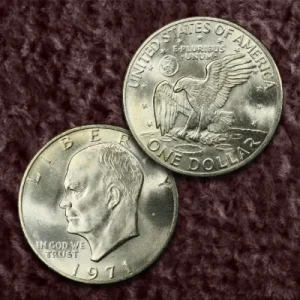
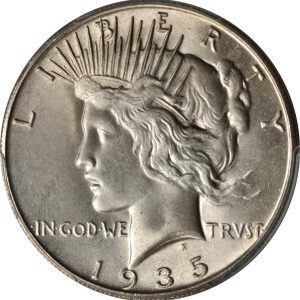
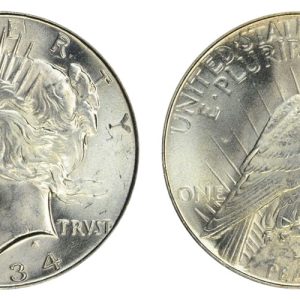
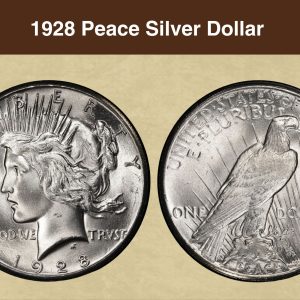
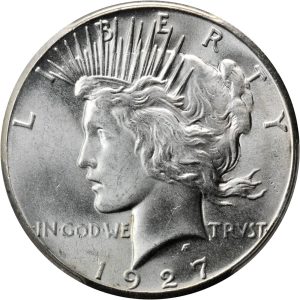
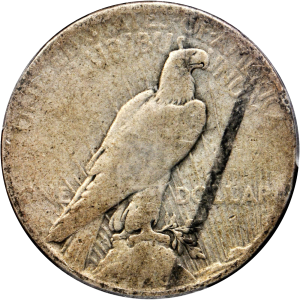
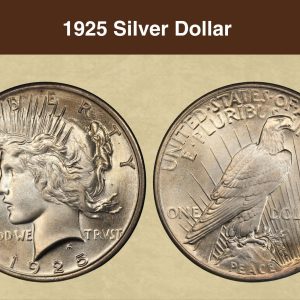
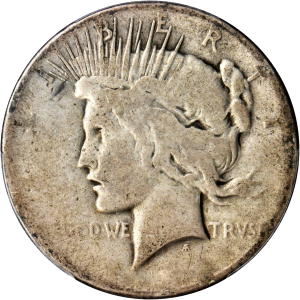
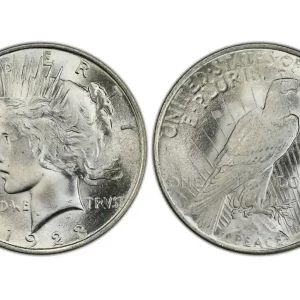
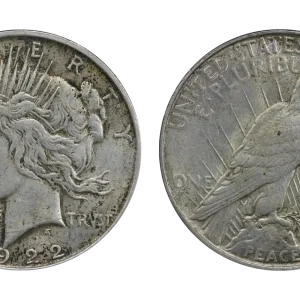
How much is a 1921 silver dollar worth with no mint mark?
A 1921 silver dollar with no mint mark (a Philadelphia Morgan Dollar ) is worth approximately $30 to $50 in circulated condition and can range from several hundred to over $17,500 in pristine, uncirculated condition, depending on the coin’s specific grade. The value is determined by the coin’s condition (grade), with higher grades commanding much higher prices, and the 1921 Morgan Dollar has a very large mintage, making even uncirculated examples relatively common compared to other rare coins.
What is the error on the 1921 S Morgan dollar?
One popular minting error is the “ thorn head” minting error. On coins with this rare mistake, the 1921 silver dollar with a mint mark of “S” will contain fewer striking marks than normal coins. These coins often sell for $350 or more on the open market.
What makes a 1921 silver dollar rare without mint marks?
A 1921 silver dollar without a mint mark is a Philadelphia mint coin, which is significant as the final year of the original Morgan dollar series. While not considered “rare” in terms of being the most valuable variety from the year (that distinction goes to the Denver mint issue), its value is still tied to its historical context as the end of an era, and its condition and any potential minting errors can make individual coins rare.
What errors can be found on 1921 dollars?
Most Valuable 1921 Morgan Dollars Error Coins: Rare minting mistakes, such as doubled die obverse, off-center strikes, and missing mintmarks, are highly sought after by collectors. Some of these errors can sell for thousands of dollars, depending on their rarity.